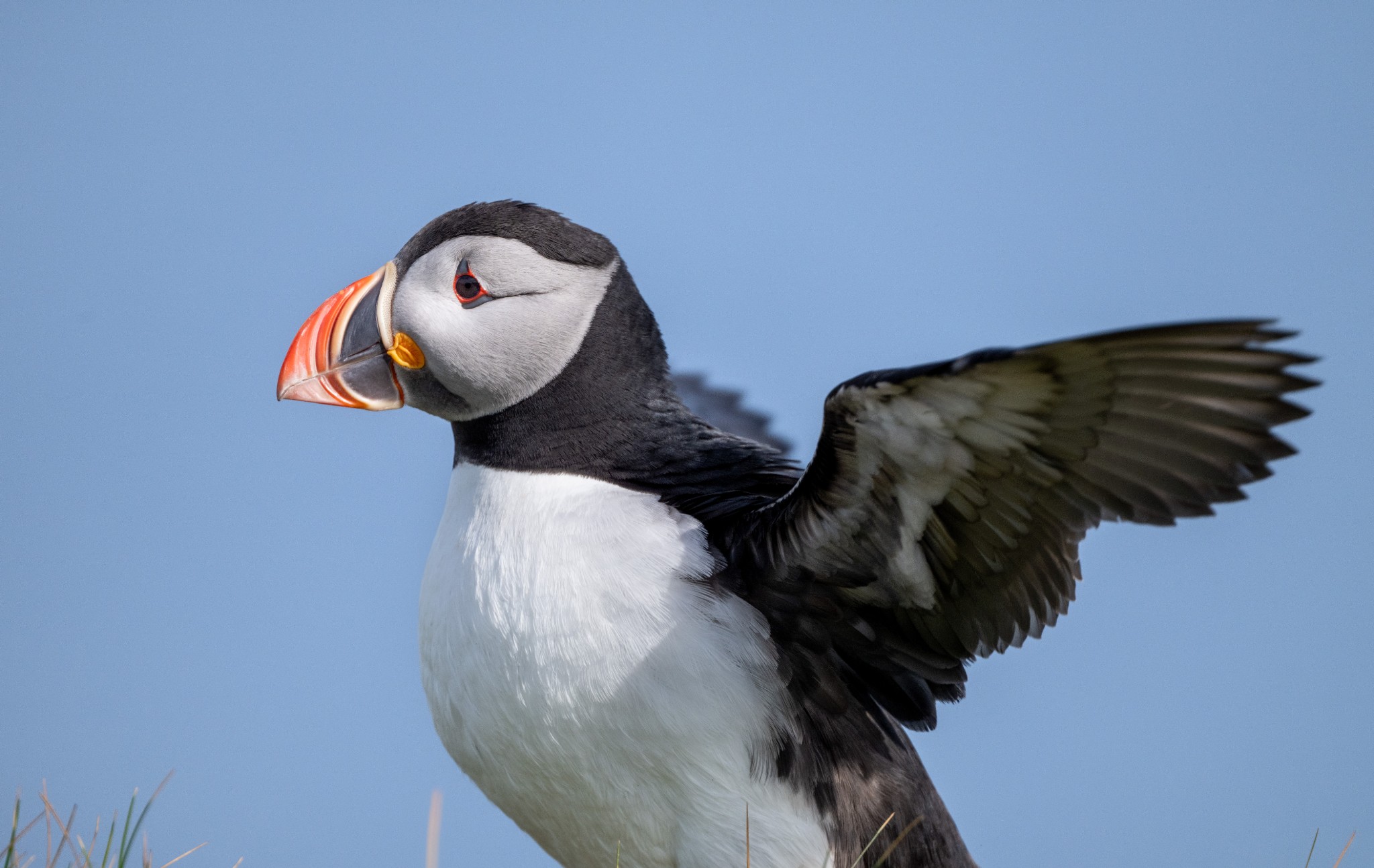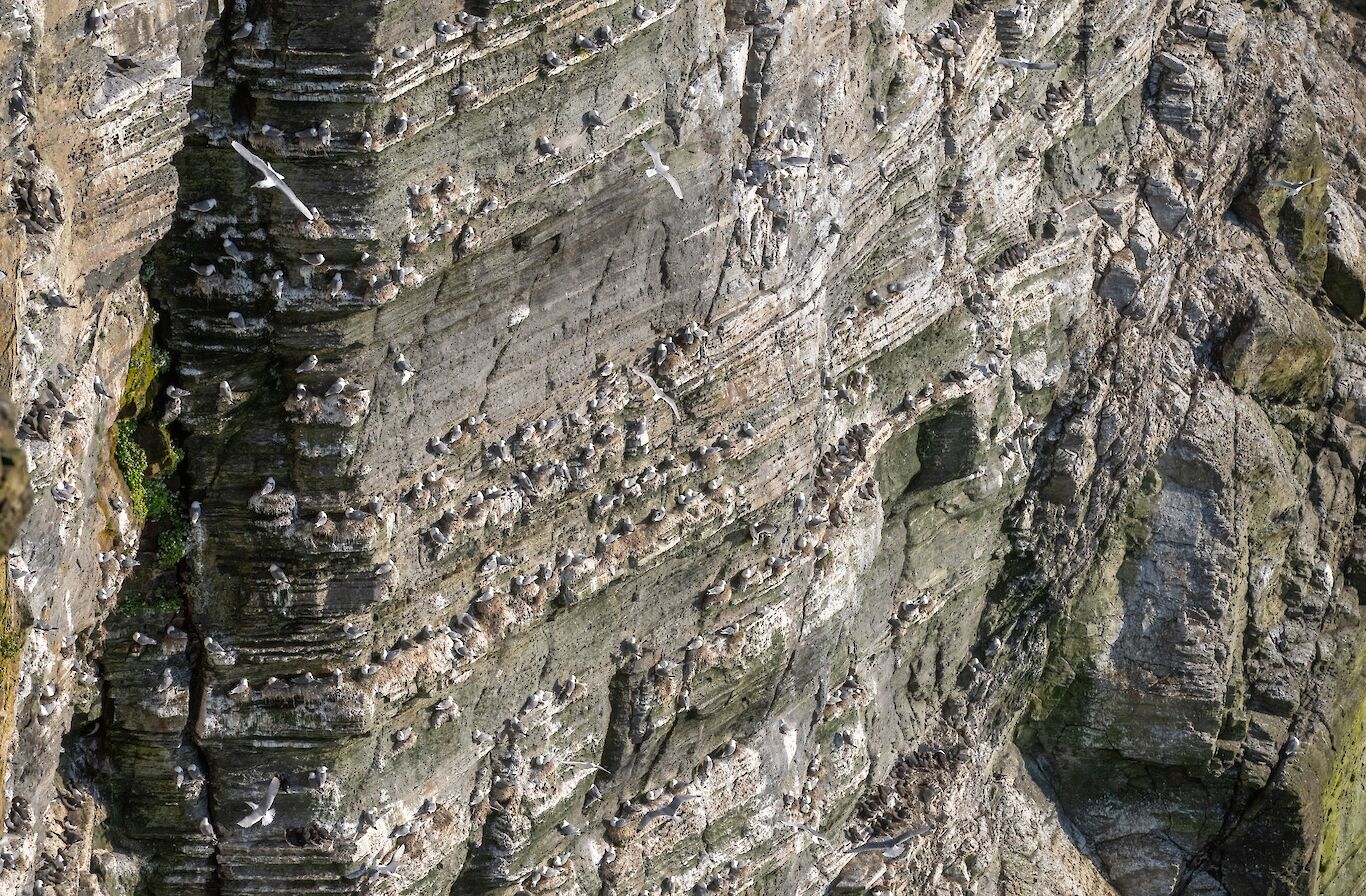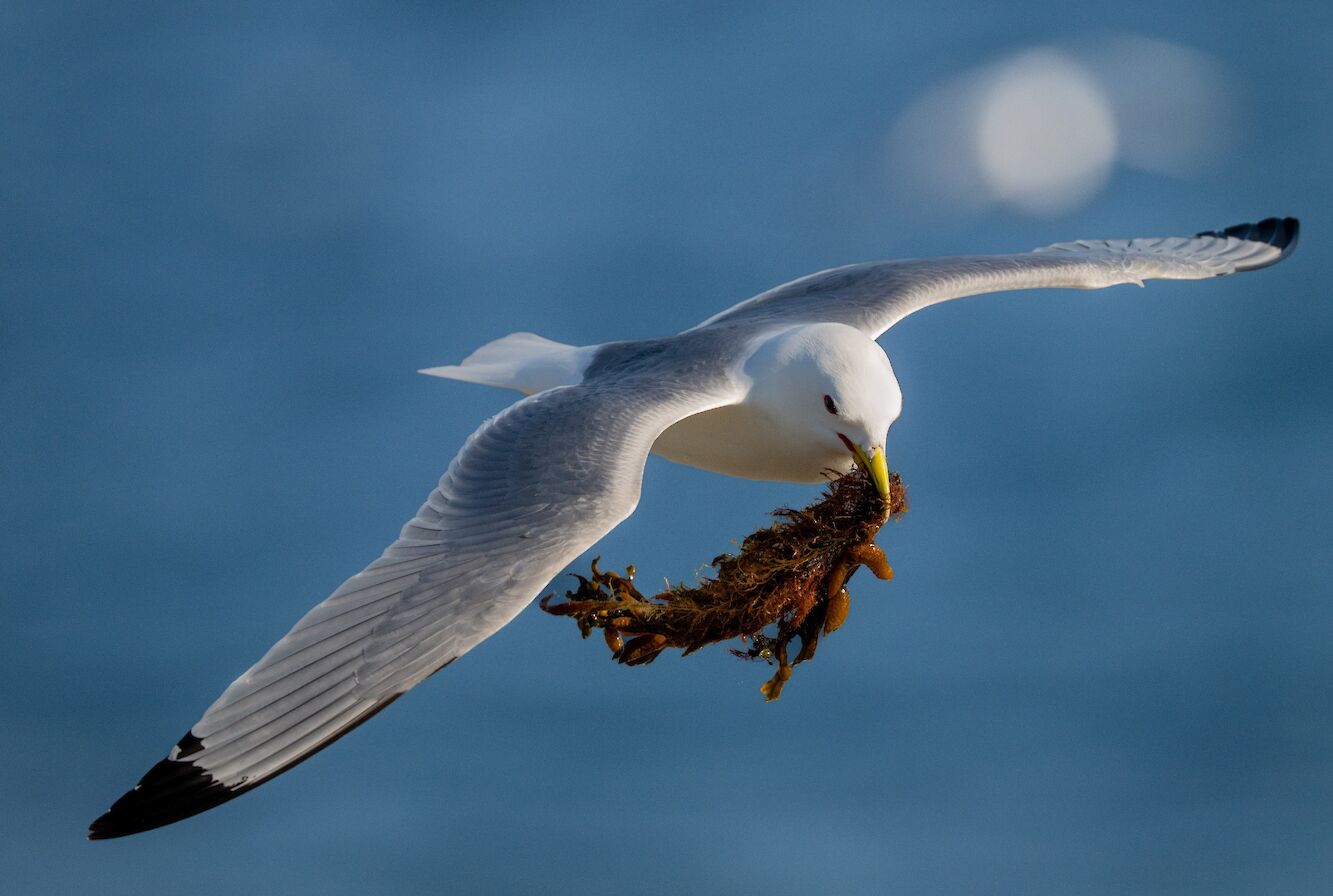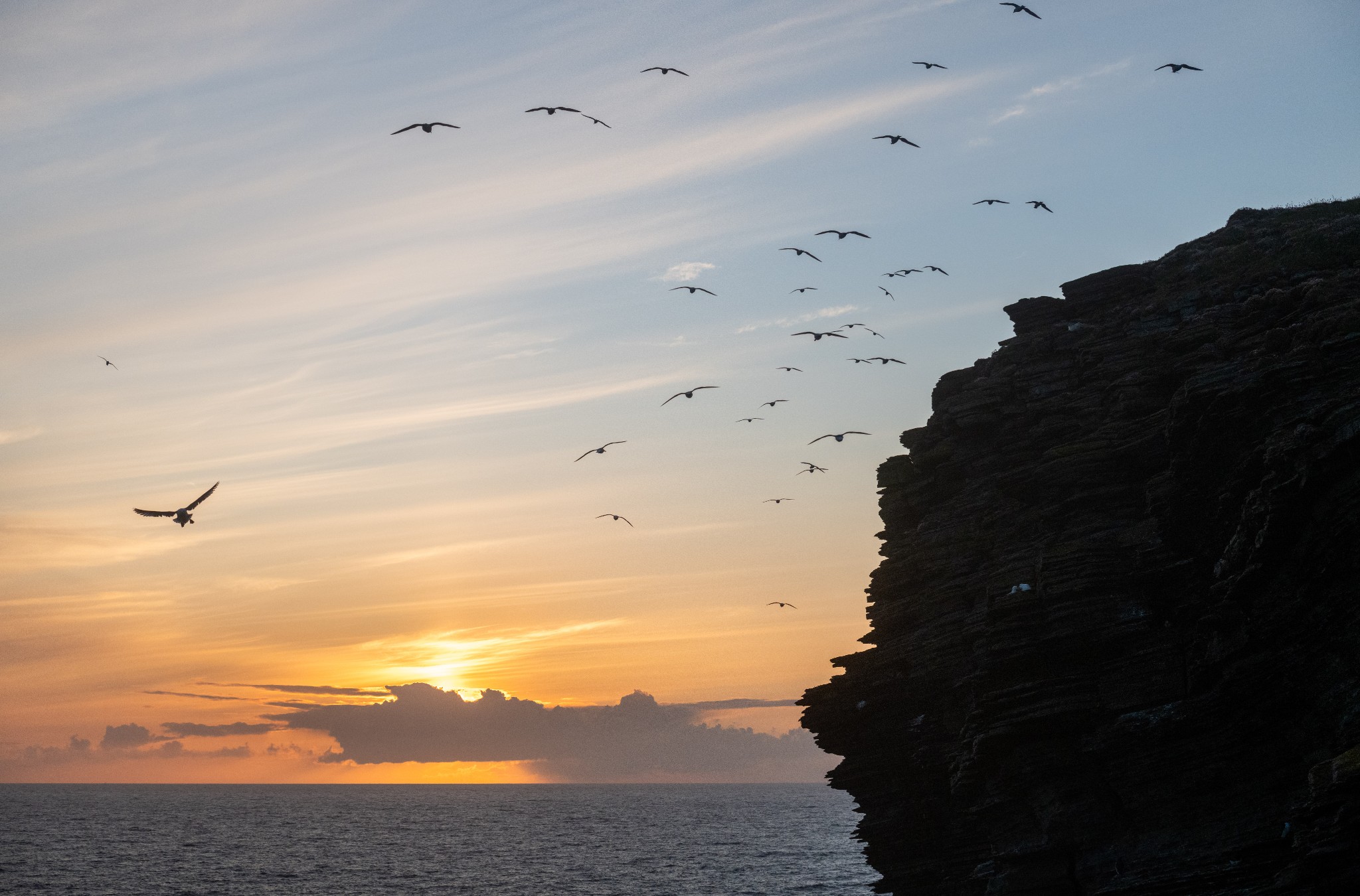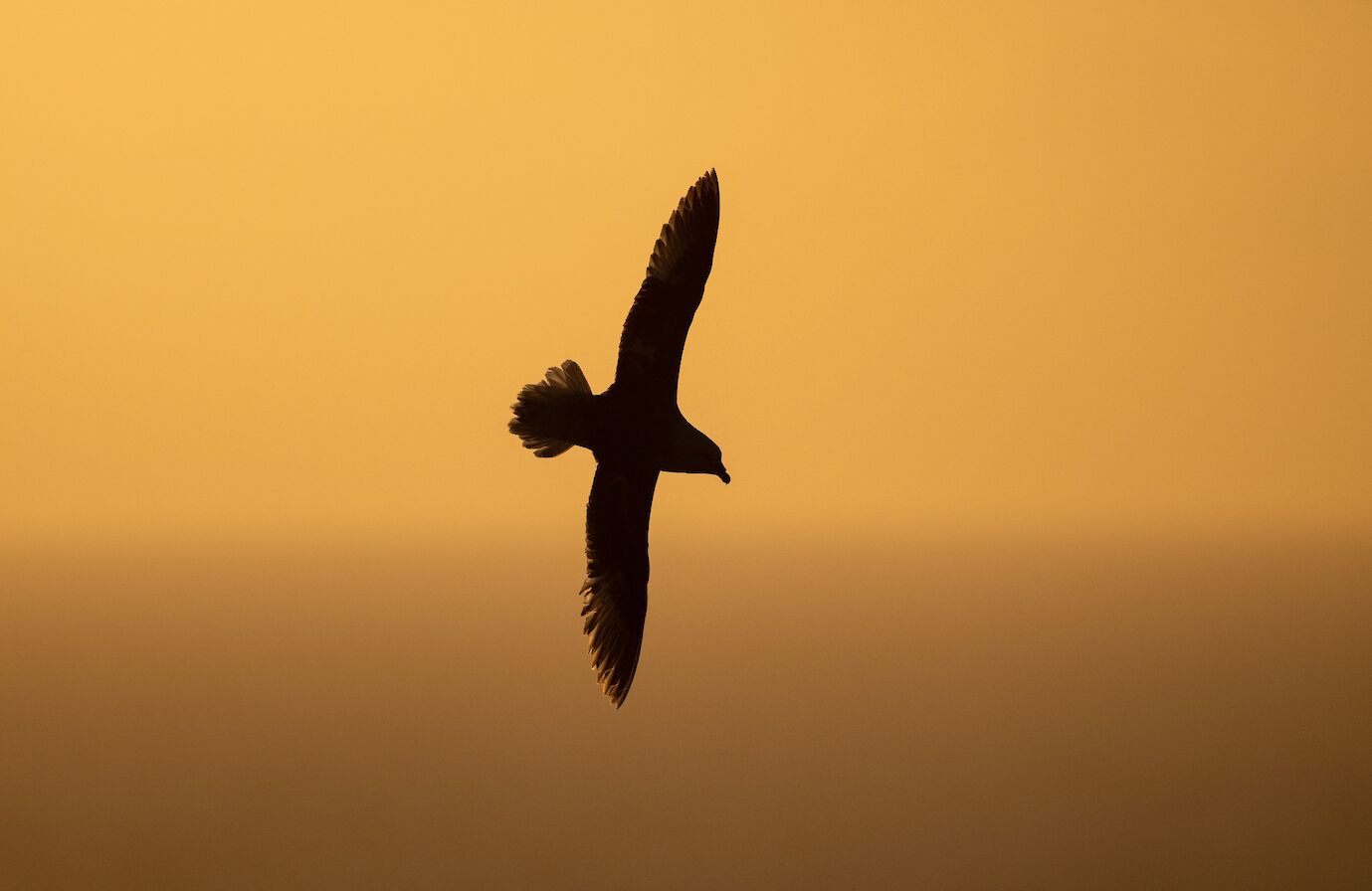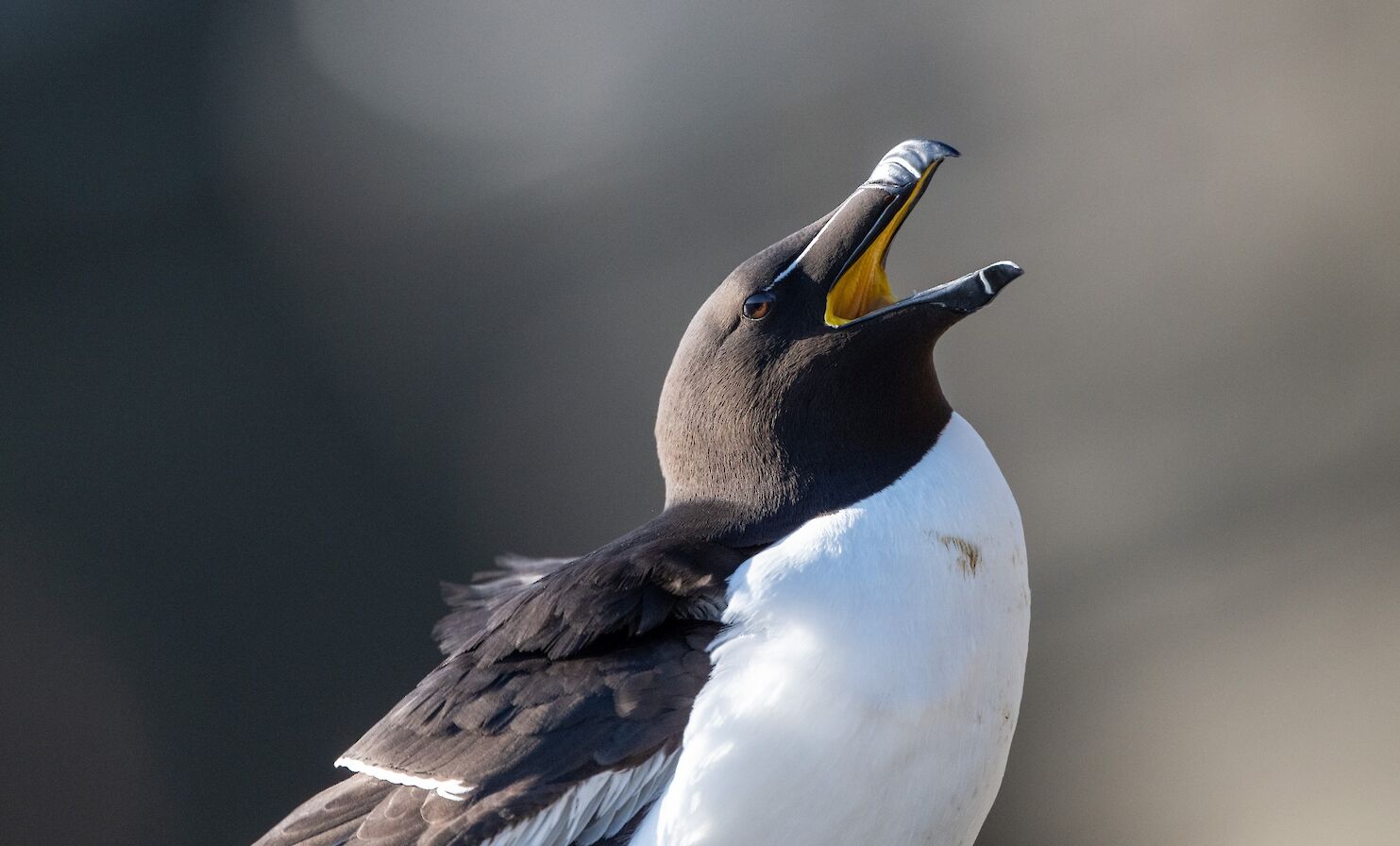I’ll admit when it comes to puffins I’ve been a little spoiled. When I made my first ever wildlife documentary in an attempt to break into the industry, I visited St Kilda in order to film the main species in the film, the fulmar.
To say ‘visited’ perhaps sounds a bit flippant as it was actually a mammoth task to get there. I had to apply for permits in order to film and camp there for five days, not a straightforward task given I had no references in terms of filming. Once my permits were secured, including a schedule one photography licence for another of St Kilda’s specialties, the leach’s petrel, I was on my way.
The weather had other plans however. I got stuck in Leverburgh in Harris for another five days hoping the sea would change its mood. I saw other visitors at the B&B come and go but having come this far I wasn’t going to give up. So, when the dramatic sight of the twin sea stacks Stac Lee and Stac an Armin loomed into view under a thin blanket of dark clouds I knew the 35-mile trip out into the Atlantic Ocean was going to be worth it.
My puffin memories from St Kilda are so clear and strong that I think it has clouded my perspective when it comes to seeing them in Orkney. Finding myself on the vibrant green steep slopes of St Kilda surrounded by courting puffins, clacking their bills back and forth just mere metres away, has always stayed with me. As a young filmmaker trying to make his way in the world I couldn’t have been happier.
It didn’t help that, having gone on to be a wildlife cameraman, I was commissioned to film puffins for a BBC Scotland production on the Isle of May where I witnessed what is known as a puffin ‘wheel’. Having been out at sea fishing, a puffin has to return to its burrow to feed its chick, running the gauntlet of multiple aerial predators only too keen on stealing its hard-won catch. In Orkney those are most likely great and Arctic skuas as well as great black backed gulls.
In large puffin colonies the birds try to counter this by flying back to the colony in groups, often in the evening. The birds don’t like to land straight away however. Imagine a wide hollow tube where the ‘hard’ part of the tube are puffins flying around and around. This late evening on the Isle of May there were thousands upon thousands of individual puffins taking part in a ‘wheel’, a sight I will never forget.
So, when people ask me ‘seen any puffins?’, I admit these days I find it a little harder to get excited about them.
Which begs the question why do we love puffins so much? Let’s face it, they have a lot going for them; large, soft looking eyes, a dapper black and white suit, set off with bright orange legs and an impossibly large and colourful bill. A puffin beak is one of the marvels of nature and takes it five years to grow a beak of the size, pattern and shape we recognise on adult birds.
The beak of a juvenile puffin is much more triangular by comparison and a dull red colour. As the bird matures grooves appear on the beak, the shape deepening, and by the time the bird is five it will have two grooves in the bill.
The colourful beak plays multiple roles; in social communication, for digging, for fighting, multi-purpose ‘billing’ with other puffins, and the all-important tool for catching fish.
I know I shouldn’t have but I did complain a little when all the settled good weather we experienced through the month of May meant poor conditions for photographing birds and the landscape. The harsh light proved particularly difficult around black and white birds.
A change in the weather and a visit to my favourite seabird city, Marwick Head, made me think about the puffin in a different way. On walking up from Marwick Bay one morning in a stiff westerly wind I could see the level of bird activity was very high. Great skuas patrolled overhead, on the lookout for new seabird chicks no doubt, shags streamed past just above the waves and a flock of fulmars had gathered in a raft of perhaps 200 birds below the cliffs.
Looking out to sea, multiple puffins were whizzing past, their bright orange legs spread out like wind breaks before landing together on the cliffs. There might only be around 30 puffins at Marwick amongst the throng of common guillemots so it’s not exactly a puffin hotspot. I was guiding a young couple from Canada who couldn’t quite believe what they were seeing, remarking ‘We live on a prairie so to see these many birds in such a dramatic place is just amazing,’.
As we watch the puffins come and go more people stopped on the path, eager to see what we were looking at. There is something joyous in seeing people enjoying birds, and this day people had joy in seeing puffins. They then starting asking about the other birds and we picked out the differences between razorbills and guillemots, common gulls and kittiwakes. Perhaps puffins can be the conduit to a wider interest in birds, a poster bird for others.
Having finished guiding for the day I decide to come back to Marwick Head in the evening, partly by being inspired by the morning session, partly to clear my head and partly to do some photography, which also helps.
With no puffins around and many more guillemots on the cliffs than in the morning it was a reminder that seabird colonies often look very different throughout the day. This is why I’m always reluctant to say ‘it looks busier this year’, or ‘it looks quieter this year’, much better to leave it to the professionals who count them. On that note it’s worth throwing out a few statistics for the main species found at Marwick Head. The number of individual guillemots counted during the Seabird 200 census was 34,679. The number during the 2015-21 seabird census was 11,985. The most recent count in 2024 showed 7,316 birds. So, although these cliffs often look and sound busy, many of the birds we have grown used to seeing over the years are in real trouble.
I settle down and wait for sunset, the soft spot I gained for the fulmar as I made my filming break hasn’t waned and the weight lifts off my shoulders as I watch and photograph it mastering the updrafts, hanging in the wind with a golden sea behind it.
As I descend back down the hill, I’m met by the thrilling site of hundreds of kittiwakes streaming past with the sun setting behind them, calling as they go, their beaks stuffed full of mud and grass and seaweed, the building blocks of their nests. I take hope in the albeit small gains they have made recently. The 901 adults on nests counted in the 2015-2021 census now number 1439 adults on nests.
With the recent ban on sand eel fishing in UK waters upheld, it’s a timely positive move to help them come back from the brink. Losing these iconic seabirds isn’t an option. Let’s continue to try and help them as much as we can so future generations can take joy in them, just as we do now.
Raymond is a wildlife filmmaker who also offers bespoke Orkney wildlife tours and one-to-one wildlife photography tuition. Find out more via his official website. You can also find him on Facebook, Twitter and Instagram.

